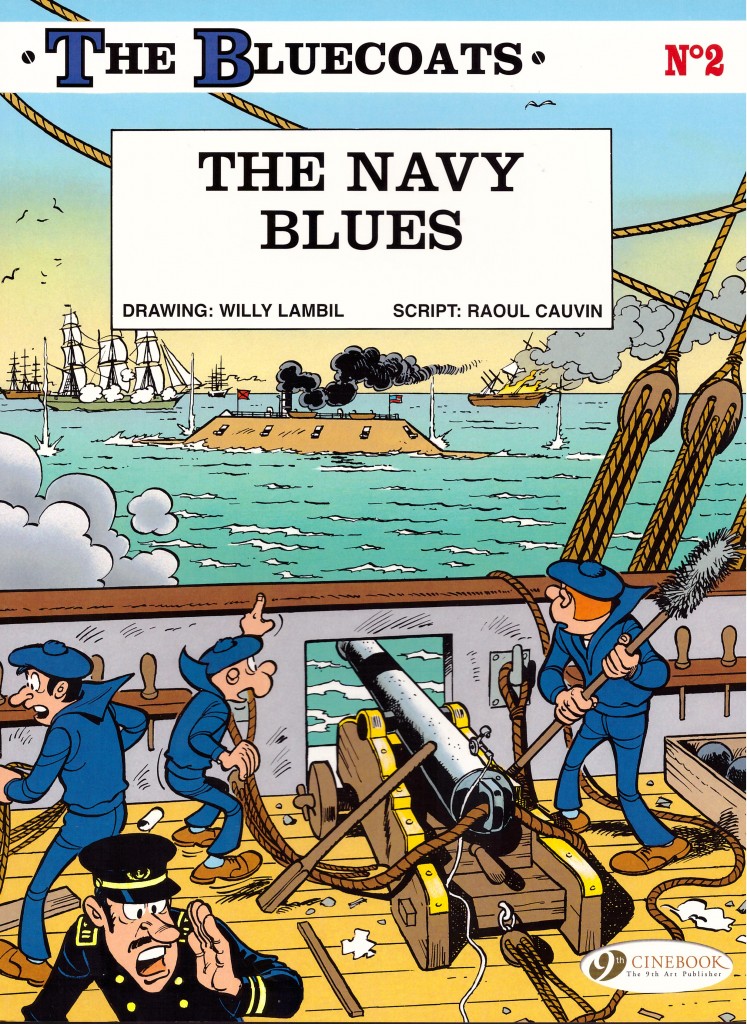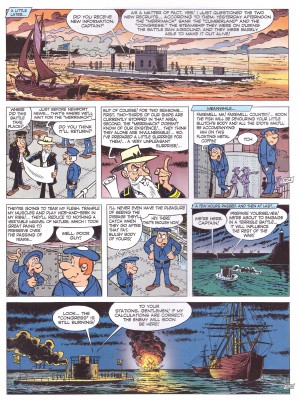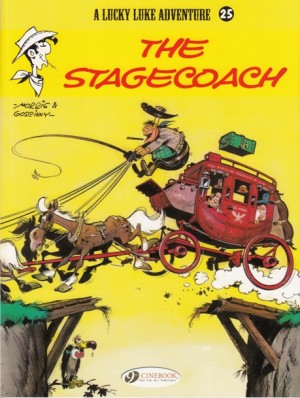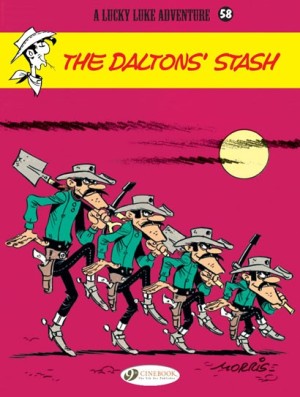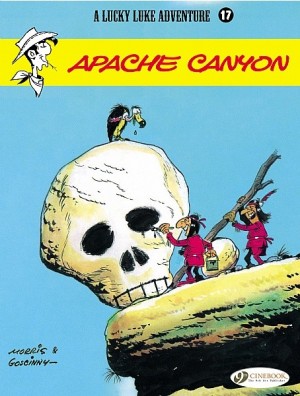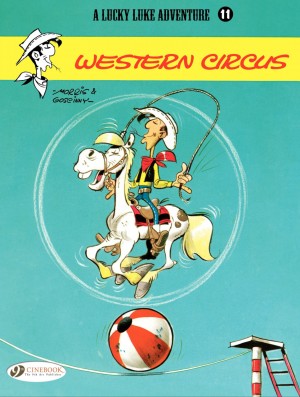Review by Ian Keogh
The running gag stringing through the first part of The Navy Blues is Sergeant Chesterfield’s demotion through the strata of respect by being shunted from cavalryman to infantryman to artilleryman to stretcher bearer, always accompanied by Corporal Blutch. The pair end up as sailors, as the spark for this graphic novel is the most significant naval battle of the American Civil War when the Merrimack and the Monitor met in the first ever encounter between warships with armoured hulls.
Chesterfield is a cavalryman with a belief in the Union cause he’s fighting for, while Blutch is an extremely reluctant conscript well versed in methods of avoiding combat, yet Chesterfield’s affection for his comrade seems unbounded. This deep attachment lacks any real grounding, and is unconvincing in any manner other than a surely unlikely coded message about same sex relationships, the loyalty seemingly not reciprocated on Blutch’s part. There’s never any sense that this pair belong together or even particularly enjoy each other’s company.
As Raoul Cauvin’s plot is sparked by their comradeship, it doesn’t start well, and as it continues it lacks the inventive comedy that made Robertsville Prison a decent read. The slapstick farce goes exactly where any young reader will imagine, with only the occasional surreal element fighting against type, and these gags take some setting up. The construction probably worked when the story was serialised on a weekly basis in the 1970s, but the repetition and predictability do it no favours as a graphic novel.
The pity of a weak plot is that Willy Lambil has really put the effort into the cartooning. He packs his busy panels to ensure the impression that we’re seeing an army (or for the second half of the book a navy) and that everyone is active. Many individual panels occupy a half page, and these are terrific, showing a ship running aground or an infantry charge up a hill. While most of the book is coloured in flat tones, the sample art shows Lambil letting loose, creating an impressive twilight, and a night scene illuminated by a burning ship. The contrast is extremely effective.
For the finale Cauvin ups his game as he delves into Chesterfield and Blutch being instrumental in saving the day when confronted with the feared Merrimack. It could be claimed that their previous string of failures was necessary to accommodate this conclusion, but if so it was a long time in coming.
With its mixture of historical setting, comedy duo and adventure The Bluecoats is very obviously aimed at the same market as Asterix. It’s been very successful in Europe, but all the top European adventure series took a few books to settle into a groove, and this early Bluecoats didn’t quite hit the mark. Cinebook’s next release is Skyriders.
